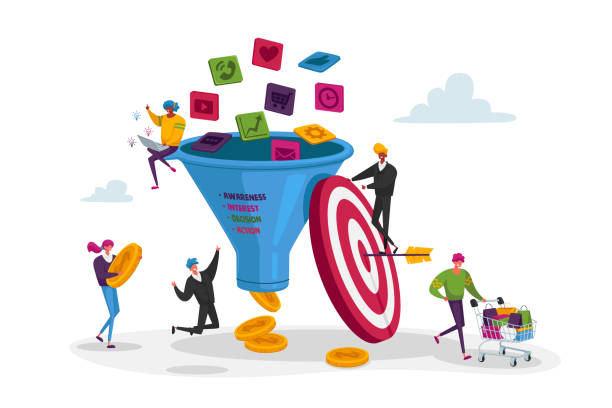Introduction: What is Content Marketing?
Content marketing is a strategic approach that produces valuable and relevant content to engage and attract a brand’s audience. Its goal is not just to increase sales, but also to educate the audience and solve their problems. A successful content marketing plan is achieved when you understand your audience and create content according to their needs. The objective of content marketing is to build long-term customer relationships that enhance brand loyalty. In today’s digital era, content marketing has become a powerful tool that helps businesses stand out in the market.
Understanding Your Audience

The first step in effective content marketing is understanding your audience. You need to know who your target audience is, what their interests are, and what problems they face. Audience research can be conducted through surveys, social media analytics, and customer feedback. This information will help you understand what kind of content you should create. By creating audience personas, you can identify their demographics, preferences, and challenges, which play a critical role in shaping your content strategy.
Setting Content Marketing Goals
Setting clear goals is essential for any successful content marketing plan. When setting goals, you should follow the SMART criteria (Specific, Measurable, Achievable, Relevant, Time-bound). For example, your goals might be to increase website traffic by 20% within 6 months or to double your social media followers within 3 months. Setting goals provides direction on where to focus your content and makes it easier to measure your performance. Clear goals also provide motivation and help you stay on track.
Developing a Content Strategy

When developing a content strategy, you need to create a comprehensive plan that conveys your brand’s voice and message. This includes content creation, distribution, and promotion strategies. Decide on the types of content you will create, such as blog posts, videos, infographics, or podcasts. By creating a content calendar, you can schedule your planned content and ensure consistency and timeliness. A good content strategy maximizes audience engagement and enhances brand awareness.
The Content Creation Process
The content creation process requires both creativity and research. You need to brainstorm topics and ideas that will be valuable to your audience. High-quality content requires in-depth research and accurate information. The format of the content is also important—whether it’s written, visual, or multimedia. Ensure your content is engaging and informative. Use storytelling techniques to make your content more relatable and memorable. During content creation, you should also follow SEO best practices to ensure your content ranks well in search engines.
Content Distribution Channels

Content distribution channels are platforms where you share your content. These channels depend on your target audience’s preferences and behavior. Popular distribution channels include social media platforms, email newsletters, and content syndication networks. You need to decide which channel is best suited for your content. Effective distribution ensures your content reaches a wider audience and increases engagement. When planning your distribution strategy, you should also consider channel-specific tactics and scheduling.
The Relationship Between SEO and Content Marketing
Search Engine Optimization (SEO) and content marketing are closely linked. Good content is effective only when it is optimized for search engines. SEO techniques, such as keyword research, on-page optimization, and backlinking, enhance your content’s visibility. Conducting keyword research is crucial to include terms your audience is searching for in your content. Through on-page optimization, you can improve your content’s readability and relevance. Following SEO best practices is crucial for the success of content marketing.
Tracking Content Performance Metrics
Tracking content performance metrics is essential for evaluating your content marketing strategy. Metrics such as website traffic, engagement rates, and conversion rates indicate how effective your content is. Google Analytics and social media insights provide detailed performance reports. Regularly monitoring these metrics helps you understand what’s working and what needs improvement. Data-driven decisions help you achieve better results and refine your content strategy.
The Role of Audience Feedback and Engagement
Audience feedback and engagement are key aspects of content marketing. Feedback provides insights into what your audience thinks about your content and their preferences. Engagement metrics, such as comments, shares, and likes, indicate how engaging your content is. Considering audience feedback and incorporating their suggestions can enhance your content strategy. This feedback loop helps you create better content that meets audience expectations.
Content Repurposing and Reusability
Content repurposing is an effective strategy that allows you to adapt existing content for new formats and platforms. This approach helps you maximize your content and reach a wider audience. For example, a blog post can be converted into an infographic, video, or social media posts. Content repurposing keeps your content fresh and relevant while generating more engagement and traffic. This strategy also optimizes content creation efforts.
Content Marketing Trends and Innovations
Following content marketing trends and innovations is essential to keep your strategy updated and relevant. Nowadays, personalization, interactive content, and AI-driven insights are key trends in content marketing. Personalization makes your content tailored to individual audience preferences, while interactive content engages and involves the audience. AI-driven insights help analyze audience behavior and preferences. Incorporating these trends can enhance your content marketing strategy.
Content Calendar and Scheduling
A content calendar and scheduling help organize and streamline your content marketing strategy. A content calendar helps plan your content creation and distribution schedule. It ensures that you publish consistent and timely content. Using scheduling tools allows you to automatically publish content and save time. A content calendar also helps track seasonal and timely topics, making your content more relevant and engaging.
The Benefits of Collaboration and Partnerships
Collaboration and partnerships are effective tools for amplifying content marketing and increasing brand exposure. Collaborating with influencers, industry experts, and other brands helps reach a wider audience. Collaboration brings fresh perspectives and ideas that enhance your content. Influencer marketing is also a powerful strategy that helps build brand credibility and trust. Effective collaborations and partnerships can boost your content marketing efforts.
Crisis Management and Content Marketing
Preparing your content marketing strategy for crisis management scenarios is crucial. Crisis situations, such as negative publicity or unexpected events, can impact your content strategy. You need to plan proactive and reactive measures to handle crises effectively. Clear communication and timely responses are critical in managing crisis situations. Your content marketing strategy should remain flexible and adaptable to cope with rapidly changing situations.
The Future of Content Marketing: What to Expect
The future of content marketing is filled with innovations and advancements. AI, machine learning, and data analytics will enhance content creation and personalization. Emerging technologies such as virtual reality and augmented reality will add new dimensions to content marketing. You should incorporate these trends and technologies into your strategy to stay ahead of your competitors. Monitoring future trends and adopting them early can provide you with a market edge.
